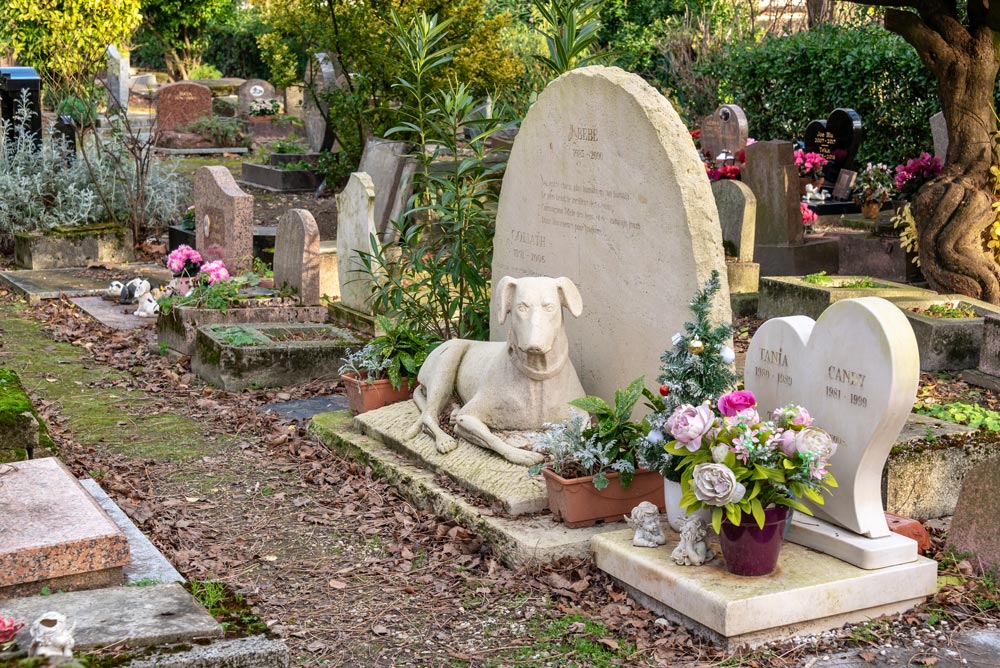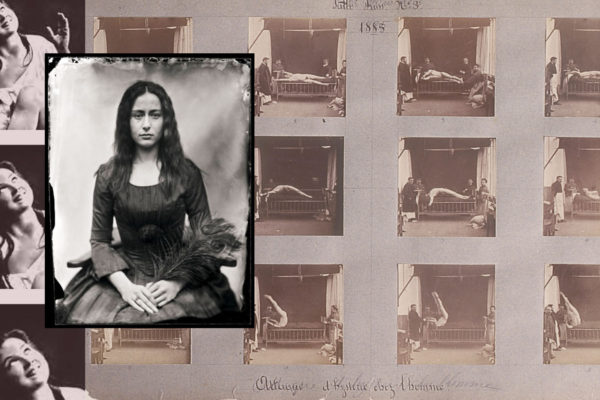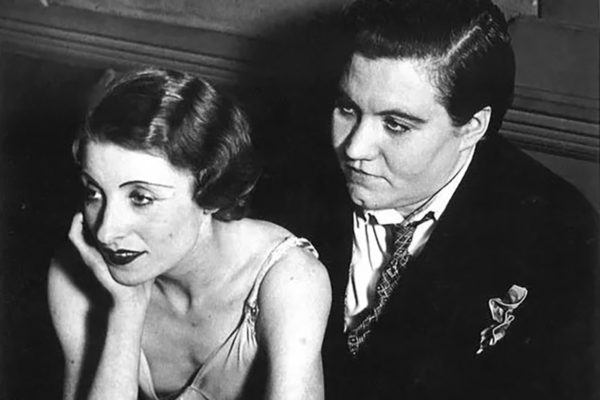
Which Paris cemetery should you visit this Halloween?
Halloween is said to be the day when the dead return to Earth and walk among the living. If that’s the case, why not increase your chances of bumping into an actual celebrity ghost by visiting one of Paris’ cemetries on 31 October? The city has several graveyards that serve as the final resting places for France’s finest men, women – and animals.
Père Lachaise

If Paris cemeteries were members of Destiny’s Child, Père Lachaise would doubtlessly be the Beyoncé. Its popularity dwarves the others. Get this: 3.5 million people visit it each year. But what makes it the Daddy of death?
Like many rises to fame, Père Lachaise didn’t have an easy ride. When it opened in 1804, only 13 people were buried there. Embarrasing! The problem was that it was too far out of central Paris and – worse – it was also up a hill. Père was a plucky, ambitious young graveyard and pulled off a rather audacious stunt to attract the public’s attention. Officials arranged to have the bodies of literary celebrities Molière and Jean de la Fontaine reinterred in Père Lachaise. Who wouldn’t want to be buried in company like that? From 44 burials in its first year to 833 five years later, Père Lachaise was on its way. A similar coup secured the remains of medieval religious lovebirds Héloïse and Abélard, making it a hot spot for romantics too.
Fast-forward to the present day and Père Lachaise can boast one million burials, one of which is a certain Jim Morrison. The Doors’ lead singer died of an overdose in 1971 while living in Paris, one of the conditions for being buried in Père Lachaise. His final resting place has been an attraction for 50 years with fans, able to get close to their idol in a way they couldn’t in life, and with tourists for whom his grave is simply a Paris must-see along with the Eiffel Tower and Notre Dame. While Morrison’s grave is the most popular attraction in Père Lachaise, not all the attention is welcome or indeed respectful, with some visitors leaving whisky, graffitiing the fencing around his plot or even having sex on his grave.
You can avoid all that by paying your respects to Oscar Wilde, Edith Piaf or Frédéric Chopin instead.
Best for: Rock ‘n’ roll fans, general tourists
Famous bodies: Jim Morrison, Oscar Wilde, Edith Piaf, Frédéric Chopin, Gertrude Stein, Colette, Honoré de Balzac
Montparnesse Cemetery

Jim Morrison’s fans aren’t the only ones who like to leave unconventional gifts on their hero’s grave. French icons Jean Paul Sartre and Serge Gainsbourg are buried in Montparnasse in the city’s second largest cemetery. The graves of both men are regularly covered in metro tickets, offerings from devotees in reference to their writings. In Sartre’s case, it’s a line from his book Les Mots in which he describes a experiencing a sort of imposter syndrome and compares the fear of being found out to that of being caught travelling on a train without a ticket; in Gainsbourg’s case, it’s his song about a suicidal train-ticket puncher, Le Poinçonneur des Lilas. They both mentioned trains in their work, so now people leave train tickets on their grave. I mean, why not? You’ve probably got one in your pocket anyway and putting it on top of a dead person will make you look like a super-fan, not a regular tourist. Plus, it saves a trip to the bin.
What, other than grotesque vanity, makes people want to leave something of themselves behind when they visit a cultural site? Leaving train tickets on a grave is one step up from carving “I was here” into a Roman ruin. These fans weigh the tickets down with pebbles to stop them being blown away and becoming more obviously what they are: litter.
That aside (deep breath) Montparnasse Cemetery is the resting place to some of France’s greatest writers. Simone de Beauvoir, the feminist author, shares a plot with her lifelong companion Jean Paul Sartre, romantic poet Charles Baudelaire is here, as is novelist and screenwriter Marguerite Duras. Anyone with a passing interest in French history will want to see the grave of Alfred Dreyfus, the Jewish military officer whose trial for espionage ignited debate about anti-semitism in France in what became known as The Dreyfus Affair. Dreyfus’ supporter, Emile Zola, is buried in our next cemetery, Montmartre.
Best for: Literary fans, people who enjoy littering graves
Famous bodies: Jean-Paul Sartre, Simone de Beauvoir, Serge Gainsbourg, Charles Baudelaire, Marguerite Duras, Alfred Dreyfus
Montmartre Cemetery

The list of bodies in Montmartre Cemetry reads like an attendee list at a fabulous party: Edgar Degas, Pierre Cardin, François Truffaut, Stendhal, Vaslav Nijinsky, Jacques Offenbach (the can-can composer), Emile Zola and King Louis XVI’s executioner. Artistic and historical giants all gathered together in the same place and yet they are upstaged in a most outrageous fashion by a woman, and a foreign one at that. Step forward, Dalida!
Though less-well known in Anglophone countries, this Egyptian-born Italian-French singing diva was a phenomenon in Europe. Known for her stunning looks (she was a former beauty queen), fabulous outfits and decade-spanning chart blistering success, Dalida is adored in France, her home for over 30 years. Not only is she a gay icon, she is loved by the mainstream so much so that she took second place behind Général de Gaulle in a Le Monde poll about most influential French people.
Dalida lived and died in Montmartre until her tragically early death from suicide in 1987. It’s fitting that her last resting place should be Montmartre Cemetery – and, oh, what a resting place! Because what knocks the graves of all those brilliant men into the shade is Dalida’s tomb. It features magnificent life-size white marble statue standing in front of a black plinth with golden beams shooting out from her head like a gorgeous saint. Her eyes are closed, lips pouted, hair is voluminous, falling over her shoulders in luscious curls, she is wearing a scarf and sort of negligee that shows off her heaving bosom with her… erect nipples? STIFF NIPPLES ON A GRAVE. Could someone cover them up – perhaps with some metro tickets?
Best for: Fans of erotic grave art
Famous body-ody-ody: Dalida, many significant men
The Catacombs of Paris

Do you like your death a bit more in-your-face? Well, there’s no escaping the brutal truth of mortality in the catacombs. Created in the late eighteenth century to house Paris’ six million dead. The city’s existing cemeteries were literally overflowing (there were some unpleasant incidents of bones bursting through walls into neighbouring homes) so the miles of mines located directly underneath the city streets were put to use as a permanent resting place for the remains of around 6 million Parisians. At first the bones were thrown in willy-nilly before the alleyways were renovated and many of the bones were arranged into decorative patterns.
From early in their history, visiting the Catacombs was considered quite the fashionable outing for Parisian toffs – one of the first visitors was the king – and the macrabre allure hasn’t lessened in recent times. The Catacombs have been used as a Resistance escape route during the Nazi occupation, a hiding place for criminals and, more recently, an underground organisation set up a secret cinema and restaurant there.
Best for: Mass grave enthusiasts
Famous bodies: No one really; it’s all about quantity over quality here.
Asnières Pet Cemetery

Before the Asnières-sur-Seine cemetery for pets was opened in 1899, Parisians were forced to dispose of their dead pets by throwing them in the rubbish or the river. There was barely space for people to live and die in the metropolis, let alone pets. Fortunately, a pair of animal-lovers arranged to have an island in the Seine transformed into a space where pet owners could respectfully bury their loved companions. It was the world’s first pet cemetery and wasn’t simply a collection of plots marked with lollipop-sticks. This is an Art Nouveau necropolis with an imposing entrance, ornate gravestones and tree-lined alleyways.
Within no time at all, Paris’ rich and famous buried their beloved pets in Asnières-sur-Seine. Actor Sacha Guitry and the writer Alexendre Dumas (of Three Muskateers fame) have pets buried here. It’s not just the owners who have claims to fame. Rin Tin Tin, massively successful dog actor and star of 30 films, was returned to his native France from Hollywood upon his death at the age of 14. While cats and dogs make up the majority of residents, all kinds of pets may their furry or feathery heads down here: birds, guinea-pigs, hamsters, fish, horses, sheep, pigs, even a monkey called Kiki. Perhaps the most exotic resident is the co-founder Marguerite Durand’s pet lion Tigre.
To some, paying for a pet’s burial in these exclusive surroundings may be extravagent but for others it’s not enough. In 2003 a poddle called Tipsy was buried wearing a diamond-encrusted collar worth €9,000. Rumours about the buried treasure circulated until 2012 when graverobbers dug up poor Tipsy and stolen the collar, scattering her bones in the process. In other parts of the cemetery, man’s appreciation of animals is in evidence in the multiple monuments dedicated to animals that have saved human life (Barry an Alpine rescue dog) or given their lives in our service as police or military dogs.
Best for: Animal lovers
Famous bodies: Rin Tin Tin, Kiki the monkey





